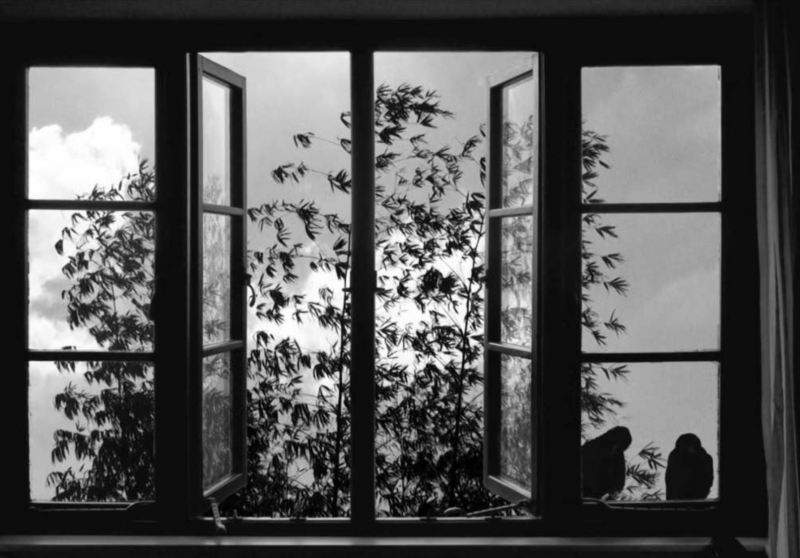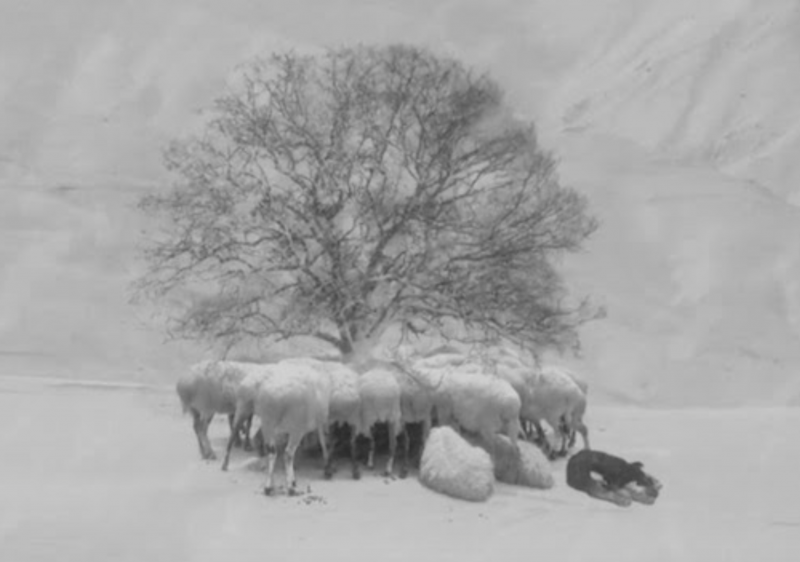Framing It
Posted on October 24, 2021“I’ve often noticed that we are not able to look at what we have in front of us, unless it’s inside a frame.”
– Abbas Kiarostami
This quote has been sitting on the Notes app on my phone since 2018. It is the opening quote to the trailer of cinematographer and photographer Abbas Kiarostami’s experimental film entitled 24 Frames. I came across this film at a time when I was feeling particularly doubtful and uncertain in my personal oil painting practice. I found myself starting a painting and not finishing it, looking at the other half-baked paintings on my floor or in my journals, overcome with this idea that my art was simply not good enough to continue. But maybe, I thought after seeing this trailer, it was because I was not looking at my work in the right way. Maybe the paintings each needed their own frame — something to signal that it was worthy of being looked at. I sat with that interpretation for three years, but with Donella Meadows’ Thinking in Systems, I now seek to explore these “frames” as models.
24 Frames explores what temporally surrounds a still image. Using special effects, sounds, and movement, Kiarostami animates 24 images of mostly his own photographs to imagine and “reconstruct the moments immediately before and after a photograph is taken… [to] creat[e] a series of poignant studies in movement, perception, and time” (“24 Frames”). The structure of the film is fragmented: each frame is clearly separated by a title slide, counting up to the 24th scene. The camera remains stationed in all but one scene (where the camera tracks horses through the frame of a car window), so the viewer is fixated on the frame constructed by Kiarostami, as animals, objects, and weather come in and out of sight. His original photographs are visually beautiful, but seemingly simple in content, featuring deer in the wild, pigeons on a concrete road, seagulls on a gloomy beach, birds outside the window of a home, and people staring at the Eiffel Tower; however, as these images are animated, they become vignettes of ecosystems in action.


Stills from 24 Frames
Each of the 24 frames in Kiarostami’s film can be viewed as a model that interprets the scene he as the photographer witnessed. As Meadows puts it: “Everything we think we know about the world is a model. Every word and every language is a model. All maps and statistics, books and databases, equations and computer programs are models. So are the ways I picture the world in my head—my mental models. None of these is or ever will be the real world” (86). The images photographed and Kiarostami become the models, akin to a snapshot-in-time diagram, constructed by his viewpoint and decided by his placement of his camera. Through the decision to represent the scene in the way he chose, these images come with his interpretations, his biases, and his politics. What is considered out of scope is driven by his choice of frame. Everything outside of the frame of the four edges, what we cannot see on our screens, is akin to what Meadows depicts in her stock-and-flow diagrams as clouds: “The ‘clouds’ stand for wherever the flows come from and go to—the sources and sinks that are being ignored for the purposes of the present discussion” (18). Kiarostami then uses animation to introduce time. Where the still images are the stock-and-flow diagrams, these moving scenes give us a sense of the behaviors in action — from which we can extract the behavior-over-time graphs of how the flows in the ecosystems we witness are impacting the stocks, or subjects.
Kiarostami uses his frames to help us see “what we have in front of us.” Models help us communicate, and these frames that Kiarostami created start the conversation. We begin to talk about these models, these representations, when we have them in front of us — his point of view. Thinking back to my initial interpretation of the Kiarostami’s frames, I think about Meadows’ advice: “You don’t have to put forth your mental model with diagrams and equations, although doing so is a good practice. You can do it with words or lists or pictures or arrows showing what you think is connected to what. The more you do that, in any form, the clearer your thinking will become, the faster you will admit your uncertainties and correct your mistakes, and the more flexible you will learn to be.” In seeing frames in this sense, sharing art begins to sound less like a test of artistic acuity and more as a way to, as Meadows encourages, “expose your mental models to the light of day.”
– cb
—
Sources
“24 Frames.” The Criterion Channel, https://www.criterionchannel.com/videos/24-frames.
Kiarostami, Abbas. 24 Frames. CG Cinema, Kiarostami Foundation, 2017. Accessed 2021.
Meadows, Donella H. Thinking in Systems: A Primer. Chelsea Green Publishing, 2015.